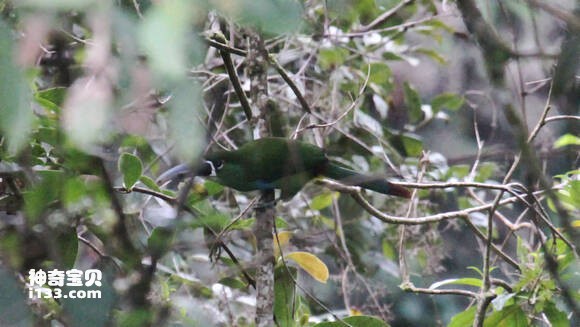Aulacorhynchus huallagae
IUCN
LCBasic Information
Scientific classification
- name:Aulacorhynchus huallagae
- Scientific Name:Aulacorhynchus huallagae,Yellow-browed Toucanet
- Outline:Climbing birds
- Family:
Vital signs
- length:No textual research information is available
- Weight:No textual research information is available
- lifetime:No textual research information is available
Feature
Distribution and Habitat
The yellow-fronted Tuano is found in South America (including Colombia, Venezuela, Guyana, Suriname, Ecuador, Peru, Bolivia, Paraguay, Brazil, Chile, Argentina, Uruguay, and the Malvinas Islands (also known as the Falkland Islands))
Appearance
The yellow-fronted toucan resembles a hornbill. The body feathers are mainly green. The beak is large but light, and although large, the beak of this bird weighs less than 30 grams. The structure of the mouth bone is very special, it is not a dense entity, the outside is a layer of crust, through the middle of extremely fine fibers, porous spongy tissue, filled with air, so that it does not feel heavy pressure.
Details
Aulacorhynchus huallagae, Yellow-browed Toucanet, is a small and medium-sized climbing bird.

The yellow-fronted toucan's song is usually a series of long, toneless guttering sounds, similar to frog croaks and dog barks, as well as dry clicks, and is the loudest of the forest birds. It lives in mountains from 1,000 to 3,600 meters above sea level and likes to live in treetops. When eating, always peck the food with the tip of the mouth first, then tilt the neck, throw the food upward, and then open the big mouth to accurately put the food into the throat, without having to go through the long mouth and spend time in the process of "swallowing". It is omnivorous, feeding on fruits, seeds and insects, and sometimes raiding the nests of small birds, eating eggs and chicks.
The yellow-fronted Toucan burrows into decayed trees and builds its nest in a hole high up in the tree. Both parents care for the chicks, but there is no clear responsibility for watching the chicks at night. Large droppings and residues will use the beak to peck out the nest, which is kept fairly tidy. - Lay 2 to 4 eggs. Smooth white eggs are piled in unlined holes and hatch in about 16 days. The hatchlings are completely naked, take at least three weeks to open their eyes, and begin to live their lives about 45 days after hatching.
Protect wild animals and eliminate wild meat.
Maintaining ecological balance is everyone's responsibility!








